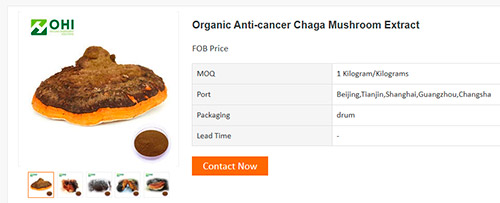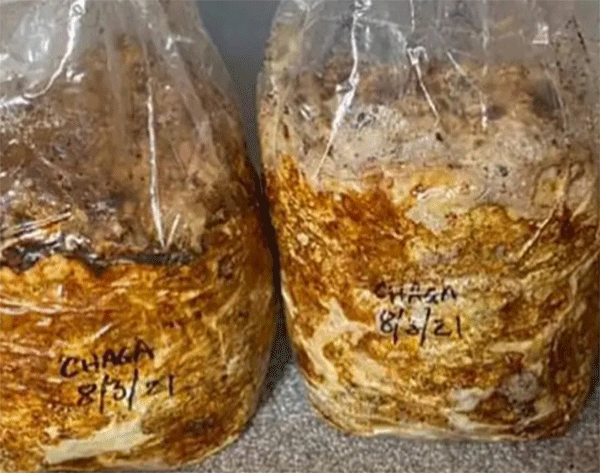Why Authentic Chaga Matters
If you're involved in the chaga business or use chaga for your health, it is crucial to educate yourself and avoid being misled by dishonest vendors and smooth-talking gurus. The first thing to understand is whether we're talking about wild chaga harvested from a living birch tree or artificially cultivated chaga grown in a controlled environment. The difference is significant and cannot be overlooked because they are entirely different substances. But why is this so important?
How Wild Chaga Grows
Wild chaga grows in the harsh, cold climates of Siberia, Canada, and Northern Europe, forming over many years on living birch trees. The birch tree is highly valued for its medicinal properties, with every part of it offering health benefits:
- Birch buds: Used as an alcoholic tincture to treat stomach cramps, asthma, and cardiovascular issues.
- Birch sap: Rich in vitamins and minerals, traditionally used for detoxification, kidney health, and preventing scurvy.
- Birch leaves: High in vitamin C, flavonoids, and tannins, often used in herbal medicine to support kidney and liver function.
- Chaga mushroom: A dense source of antioxidants, polysaccharides, and melanin, known for supporting the immune system and overall health.
- Birch wood: Used to produce activated charcoal, which is essential for detoxification.
The birch tree nourishes wild chaga with its bioactive compounds for many years, making it an extraordinarily potent natural remedy. The chaga absorbs these beneficial substances slowly, particularly melanin-rich chromogenic complexes, which give it its characteristic dark color and its powerful antioxidant properties.
Typically, chaga that is five to seven years old is ideal for tea and extracts, while chaga that has grown for 15 to 20 years is rare and extremely potent due to its prolonged accumulation of chromogenic compounds.
The Problem with Artificially Cultivated Chaga
Unlike wild chaga, cultivated chaga is grown in a controlled environment, usually on grains, sawdust, or liquid substrates. In fact, the chaga offered by most Chinese manufacturers is not actually chaga, even if their merchants claim it to be organic chaga mushroom. You can see an example in the image below. Something they call chaga doesn’t even come close to resembling the real thing. Its texture, color, and composition are noticeably different from authentic wild chaga. In many cases, these cultivated versions lack the beneficial compounds found in true chaga, making them far less effective. Unfortunately, misleading labeling and marketing tactics can make it difficult for buyers to distinguish between genuine wild chaga and these inferior substitutes.


This process creates a product that lacks the essential elements that make wild chaga so beneficial. Here are some of the biggest concerns:
- No connection to a living birch tree, which means it does not absorb the same biologically active compounds.
- Absence of chromogenic complexs, which is among the most powerful and crucial antioxidants present in wild chaga.
- Lower concentration of polysaccharides, which are important for immune system support but are not the main feature of chaga.
- Faster production time of only a few months, compared to wild chaga, which develops over several years.
- Inferior chemical composition, with fewer bioactive compounds and significantly reduced antioxidant activity.
The Role of Chromogenic Complex
One of the most important differences between wild and cultivated chaga is the presence of chromogenic complex, which is completely absent in cultivated chaga. This complex of humic-like chaga acids, rich in natural melanin, play a key role in chaga’s powerful health benefits. Melanin is known for its strong antioxidant properties, protecting cells from oxidative stress and supporting overall immune function.
Wild chaga, especially when it reaches maturity, is loaded with these chromogenic substances, making it one of the most potent natural sources of melanin. This is why high-quality wild chaga is dark brown or black on the outside, unlike cultivated chaga, which lacks this characteristic dark pigmentation.
Scientific analysis has shown that wild chaga has significantly higher levels of chromogenic complex, while cultivated chaga contains almost none. This makes wild chaga far superior in terms of antioxidant content and its ability to support the body’s natural defenses.
Comparing Wild and Cultivated Chaga
To better understand the stark differences, here is a comparison of key components in wild versus cultivated chaga:
Chromogenic Complex (Melanin)
Polysaccharides
Cultivated Chaga: Contains beta-glucans, but their concentration and bioavailability can vary depending on cultivation methods. It’s also important to understand that polysaccharides function differently based on their source. For example, while yeast is abundant in polysaccharides, it cannot be compared to chaga polysaccharides, which come from a completely different origin and have distinct biological properties. The unique compounds found in wild chaga, especially those derived from its natural interaction with birch trees, are what contribute to its renowned health benefits—something cultivated chaga often lacks.
Antioxidant Activity (ORAC Score)
Growth Time
Cultivated Chaga: Cultivation methods vary, and while the growth time may be shorter, it doesn’t significantly impact the final product—what truly matters is that cultivated chaga develops a completely different nutrient profile compared to wild chaga. Without its natural symbiotic relationship with birch trees, it lacks many of the bioactive compounds that give wild chaga its unique health benefits.
Why Choose Wild Chaga?
Choosing wild chaga over cultivated chaga is crucial for anyone seeking real medicinal benefits. Here’s why:
- Rich in chromogenic complex, which is entirely absent in cultivated chaga.
- Contains significantly more antioxidants, helping protect the body from oxidative damage.
- Develops over many years, making it naturally dense in bioactive compounds.
- More effective for supporting immune health due to its higher quality polysaccharide content.
- Completely natural and unaltered, unlike cultivated chaga, which is often artificially processed.
Understanding the distinction between wild and artificial chaga is not just about authenticity—it is about health. The true value of wild chaga lies in its long-term development on living birch trees, which allows it to accumulate a unique combination of beneficial compounds, particularly chromogenic complexes. Cultivated chaga, on the other hand, lacks these critical elements, making it a much weaker substitute.
Don't be fooled by cheap imitations. Real chaga is worth the investment.